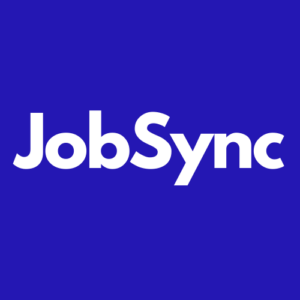
To excel in hiring, recruiting teams must engage in a cyclical process of continually evaluating and leveraging data to refine their workflows, technology, and processes to reach optimal outcomes. Operational excellence in hiring isn’t a static destination, but a journey marked by perpetual small enhancements. Just as organizations focus on improving functions like sales and marketing through RevOps and MarketingOps, respectively, recruiting teams must also imbibe a culture of continual improvements by assimilating talent acquisition best practices, underpinned by benchmarking data and their KPIs.
Here we delve into the core principles that underpin operational excellence in hiring and how organizations can leverage data to foster strategic evolution and sustainable success.
Defining Data-Driven Operations
Data-driven operations encompass a strategic approach that relies on systematically collecting, analyzing, and utilizing data to optimize business processes and decision-making. In essence, data becomes the driving force behind operational strategies, guiding organizations in assessing performance, identifying areas for improvement, and forecasting future trends.
By leveraging data to gain insights, organizations can make informed decisions, enhance efficiency, and adapt swiftly to changing market dynamics. Data-driven operations prioritize accuracy, transparency, and continuous refinement, empowering companies to achieve operational excellence and sustainable growth in today’s data-centric business landscape.
Nurturing Data-Driven Excellence in Hiring Strategies
Strategic organizations recognize that hiring is a dynamic landscape that requires a data-centric approach. By harnessing clean and accurate data, teams can measure, refine, and enhance their entire hiring trajectory. Operational excellence ensures that the data within the system is not only trustworthy but also a reliable compass for decision-making processes. This emphasis on data-driven insights forms the cornerstone of a successful hiring strategy.
Embracing Continuous Improvement
In a world evolving at an unprecedented pace, the value of data transparency cannot be overstated. Regular process retrospectives are instrumental in uncovering strengths, weaknesses, and improvement areas within the hiring ecosystem. By fostering dialogue among key stakeholders, organizations can identify actionable steps to cultivate a culture of continuous enhancement. This iterative approach paves the way for refining processes and driving sustainable growth in hiring operations.
Empowering Decisions with KPIs
The key to unlocking success in recruitment lies in the strategic use of Key Performance Indicators (KPIs) that align with your desired business outcomes. Companies that harness data to evaluate recruiter performance, gauge interviewer impact, and project future headcount needs through robust analytics empower themselves to make informed hiring decisions. This proactive approach transforms data into a forecasting engine, steering recruitment efforts toward efficiency and efficacy.
Important KPIs include time-to-fill, cost-per-hire, quality of hire, candidate satisfaction scores, and recruiter performance metrics. Time-to-fill measures the efficiency of the hiring process, while cost-per-hire evaluates the effectiveness of recruitment investments. Quality of hire assesses the impact of new hires on organizational performance, and candidate satisfaction scores gauge the candidate experience. Recruiter performance metrics, such as sourcing effectiveness and candidate conversion rates, provide insights into the productivity and effectiveness of recruiting teams.
By tracking these KPIs closely, organizations can evaluate their hiring processes, optimize recruitment strategies, and make data-driven decisions that drive strategic hiring excellence and long-term success.
Fostering Data Integrity and Expertise
Maintaining data integrity is non-negotiable in the pursuit of operational excellence. By instilling trust in data accuracy, organizations can optimize reporting mechanisms for enhanced reliability. While recruiting data is inherently flawed, introducing specialized roles like Recruiting Operations Specialists and Data Analysts further bolsters the refinement process, ensuring that data-driven insights inform strategic initiatives with precision and clarity.
Cultivating Strategic Evolution
Transitioning from operational chaos to strategic prowess is a multifaceted journey built on iterative enhancements fueled by data-driven insights. Every incremental step towards refining processes, assessing performance, and driving informed decisions contributes to developing a culture characterized by hiring excellence. By embracing data transparency and leveraging insights to propel organizational goals, companies can navigate the dynamic hiring landscape with confidence and agility.
Navigating Common Pitfalls
One common pitfall when pursuing strategic hiring excellence through data-driven operations is the reliance on incomplete or inaccurate data. Organizations may encounter challenges with data quality, leading to skewed insights and flawed decision-making processes. To overcome this, it is essential to implement robust data validation processes, invest in data cleaning tools, and ensure data integrity throughout the hiring lifecycle. The challenge of course is the balance between incomplete data and candidate throughput – part of the operations role is to ensure that data collected is absolutely necessary at that point in time, restraining the business from asking for all the data upfront.
Another pitfall is the lack of alignment between KPIs and organizational goals, which can derail strategic hiring efforts. By defining clear objectives, selecting relevant KPIs, and regularly recalibrating performance metrics to reflect evolving business needs, organizations can ensure that data-driven operations remain focused on achieving strategic hiring excellence. It’s important to ensure that the TA team doesn’t conflate recruiting goals with organizational goals, overly focused on goals within the realm of the TA team’s control.
Finally, resistance to change and insufficient data literacy among stakeholders can hinder the adoption of data-driven practices. To address this, hiring ops teams should ensure that part of the solutions immediately benefit the users that must adopt such changes. Organizations should provide training on data interpretation and analysis, and foster a culture that values data-driven decision-making and embracing change. By proactively addressing these common pitfalls and implementing strategies to enhance data quality, alignment, and stakeholder engagement, organizations can navigate the challenges of data-driven operations and unlock strategic hiring excellence successfully.
The fusion of data-driven operational practices with a commitment to perpetual evolution forms the bedrock of strategic hiring. By embracing these recommendations, your team aligns itself with a trajectory that optimizes the hiring process and propels your organization toward sustainable success in a dynamic talent landscape.


